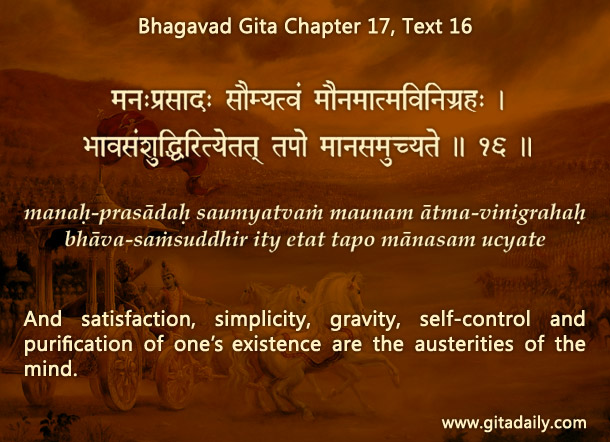Some people, especially those seeking to grow inwards, take a vow of silence, known in Sanskrit as mauna-vrata.
The rationale for such a vow is that often words draw, even drag, our consciousness externally, towards worldly objects. Sound is one of the sense objects – and it impels us towards other sense objects. So, silence is a useful tool for containing our material entanglement.
While verbal silence is helpful, the inner redirection of consciousness needs something more to be effective: mental silence. After all, the tongue moves to speak because the mind has something to speak. As long as the mind is agitated, verbal silence seems like suppression and leads to relapse. Thus it is that the Bhagavad-gita (17.16) refers to silence as an austerity of the mind, instead of an austerity of speech, the components of which are listed in the previous verse (17.15).
Bhakti-yoga focuses more on silencing the mind of its mundane prattle by focusing it on Krishna, the all-attractive supreme who is the ultimate reservoir of whatever it is that is attractive in this world. So, when we direct our consciousness towards Krishna by practicing bhakti-yoga, we are fulfilling the ultimate purpose of the vow of silence: the redirection of consciousness.
Externally, bhakti-yoga contains activities that may seem opposite to silence – activities such as singing and speaking Krishna’s glories. These activities are determinedly practiced by advanced transcendentalists who have grasped how Krishna is the supreme essence of all of reality and whose minds are not attracted to anything except him (09.14). Still such non-silent activities serve the same ultimate purpose that is served by silence – and serve that purpose far more effectively.
Instead of striving for silence, if we strive to speak about Krishna consistently, we will find our journey towards transcendence far more enlivening and fulfilling.
To know more about this verse, please click on the image
Explanation of article:
Podcast:
Download by “right-click and save”


Mental silence brings you proximity to KRISHNA